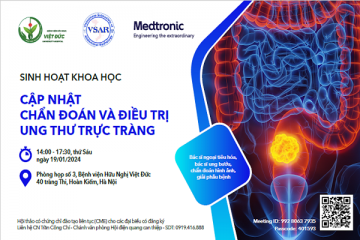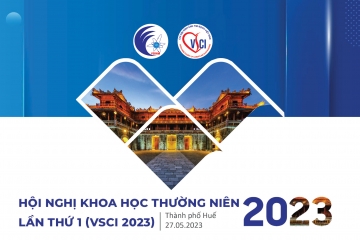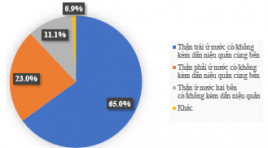
KẾT QUẢ ỨNG DỤNG XẠ HÌNH THẬN ĐỘNG TẠI BỆNH VIỆN NHI ĐỒNG THÀNH PHỐ
18/10/2023 11:47:33 | 0 binh luận
SUMMARY Background: Dynamic renal scan has become one of the most effective techniques to investigate the kidney parenchymal function, also the urine collecting and drainage system, in both adults and children. Compared with adults, it is the most commonly used test in children and accounts for more than half of the indications for nuclear medicine unit. In City Children's Hospital, dynamic renal scan has been implemented since the beginning of 2018 and initially showed its clearly role in facilitating the decision on treatment and follow-up strategy of pediatric patients. Therefore, we carry out this study to evaluate the results of dynamic renal scan application of the unit. Objective: To assess the results of application of dynamic renal scan with 99mTc-DTPA on pediatric patients in City Children's Hospital. Subject and method: We retrospectively examined data derived from 671 pediatric patients aged 01 month to 15 years in City Children’s Hospital who underwent at least 1 99Tc DTPA dynamic renal scan with diuretic challenge test from June 2018 to March 2022. The main purpose is to investigate some of the scintigraphic features related to Hydronephrosis in children and the prognostic factors of renal function loss. Results: There were a total of 740 performed scans, including 611 patients underwent once, 52 patients underwent twice, 7 patients underwent threetimes and 1 patient underwent fourtimes. Among them, there are 454 boys and 217 girls with a male/female ratio of 2/1. The age of the pediatric patients at the time of scanning varied, from 1 month to 15 years old. However, there is a clear dominant distribution for the group of patients under 5 years old, accounting for 516 cases (~69.7%%), which is more than 3 times the number for the group of patients aged 5 to 10 years and about 10 times for the group of patients over 10 years old, 175 cases (~23.7%) and 49 cases (~6.6%) respectively. Many different geographical locations in the country, where the patients come from, were noted. However the majority of cases live in Ho Chi Minh City, the number is 218 cases, accounting for ~30% of the total, followed by the west provinces and provinces from central region, as well as the Highlands area.*

ĐẶC ĐIỂM TẬP TRUNG 18FDG CỦA TỔN THƯƠNG U, HẠCH TRÊN PET/CT Ở BỆNH NHÂN UNG THƯ PHỔI KHÔNG TẾ BÀO NHỎ CÓ CHỈ ĐỊNH PHẪU THUẬT TRIỆT CĂN TẠI BỆNH VIỆN U BƯỚU HÀ NỘI
18/10/2023 11:55:43 | 0 binh luận
SUMMARY Purpose: To review some clinical features, characteristics of 18FDG uptake of tumors and lymph nodes on PET/CT in NSCLC patients with indications for radical surgery at Hanoi Oncology Hospital. Subjects and methods: 82 patients with primary NSCLC were taken with 18FDG PET/CT before surgery. Results: Right lung tumor 64.6%, left lung tumor 35.4%. The average size of the tumor was 2.6 ± 1.0 cm, the patient with lymph node (+) on PET/ CT had an average lung tumor size of 3.3 ± 0.9cm; larger than patients with N0 lymph nodes (p < 0.05). The mean SUVmax of lung tumors was 6.0 ± 4.5 and increased with tumor size (positive correlation, r=0.58). U ≤2cm, SUVmax = 4.1 ± 2.1. U >2-3cm, SUVmax = 5.3 ± 3.6 and U >3 -5cm, SUVmax = 8.3 ± 4.9. SUVmax increases with clinical disease stage and is higher in patients with positive lymph nodes on PET/CT. Conclusion: 18FDG PET/CT plays an important role in the diagnosis of NSCLC. SUVmax is a quantitative parameter related to tumor size, lymph node status and clinical disease stage. Keywords: NSCLC, 18FDG-PET/CT, SUVmax.
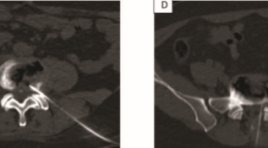
ĐÁNH GIÁ HIỆU QUẢ BAN ĐẦU ĐIỀU TRỊ THOÁT VỊ ĐĨA ĐỆM BẰNG TIÊM OZONE ĐĨA ĐỆM QUA DA VÀ PHONG BẾ RỄ BẰNG OZONE KẾT HỢP CORTICOID DƯỚI HƯỚNG DẪN CỦA CẮT LỚP VI TÍNH
18/10/2023 10:11:02 | 0 binh luận
SUMMARY Background: back pain and sciatica caused by disc herniation has a burden upon social activity. The newly minimally invasive technique, percutaneous Ozone (O2-O3) intradisal injection procedure has demonstrated safe and effective in long terms. Purpose : Evaluate the clinical effectiveness of intradiscal Ozone injection combining periradicular injection of Ozone and steroid under CT guidance for the treatment of lumbar disc herniation. Material and method: Prospective study, 100 patients symtomatic (lumbar pain, sciatica) with mild/moderate lunbar disc bulging or herniation on MRI. The patients were treated with intradiscal Ozone injection combining periradicular injection of Ozone and steroid under CT guidance. Clinical outcomes and MRI images were reviewed to evaluate at 3 months and 6 months. Results: The VAS score and the Oswestry Disability Index (ODI) before and after treatment 3months, 6 months were significant reduction. The mean improvement was 4.7 for VAS and 14 for ODI. All the procedures were technically successful. There were no adverse events associated with the treatment. Conclusion: Intradiscal injection Ozone treatment of herniated disc is an minimally invasive, easy, safe and effective procedure with low complications and side effects. Keywords: lumbar disc herniation, O3 injection
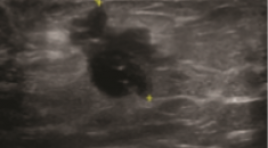
GIÁ TRỊ KẾT HỢP CỦA SIÊU ÂM ĐÀN HỒI SÓNG BIẾN DẠNG VÀ CHỌC HÚT TẾ BÀO BẰNG KIM NHỎ TRONG CHẨN ĐOÁN UNG THƯ VÚ
17/10/2023 12:02:16 | 0 binh luận
Objective: Describe characteristics of 2D ultrasound images and shear wave elastography (SWE) ultrasound breast tumor. Determinate the combined value of SWE ultrasound and fine needle aspiraton cytology (FNAC) in diagnosis breast cancer. Subject and method: 79 female patients with breast tumors were assigned 2D and SWE ultrasound, measure shear wave velocity (SWV) internal tumor and peripheral tumor, classified according to ACR - BIRADS 2013. Patients were assigned FNAC ultrasound guided and histopathological biosy after surgery. Compare the result 2D, SWE ultrasound and FNAC with the result of histopathological biopsy after surgery to determine the combined value of SWE ultrasound and FNAC in diagnosis breast cancer. Result: 79 patients with 37 benign breast tumors, 42 malignant breast tumors. Mean SWV of malignant breast tumors are lower than benign breast tumors (p < 0.01). Cutoff SWV in the differential diagnosis of benign and malignant breast tumor at peripheral tumor 2.25 m/s; internal tumor 5.1 m/s. SWE ultrasound combined with FNAC has high value in diagnosis breast cancer with Se = 97.6%, Sp = 94.6%, Acc = 96.2%, PPV = 95.3%, NPV = 97.2%, high concordance with histopathological result after surgery Kappa = 0.924. Keywords : Elastography, fine needle aspiraton cytology, cancer, breast.
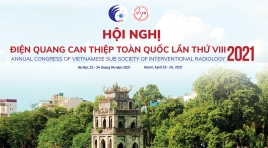
JET 7 ST: Dữ liệu lâm sàng và kinh nghiệm của trung tâm y khoa Thụy Điển
20/04/2021 13:16:59 | 0 binh luận
Đang cập nhật
Bạn Đọc Quan tâm
Sự kiện sắp diễn ra
Thông tin đào tạo
- Những cạm bẫy trong CĐHA vú và vai trò của trí tuệ nhân tạo
- Hội thảo trực tuyến "Cắt lớp vi tính đếm Photon: từ lý thuyết tới thực tiễn lâm sàng”
- CHƯƠNG TRÌNH ĐÀO TẠO LIÊN TỤC VỀ HÌNH ẢNH HỌC THẦN KINH: BÀI 3: U não trong trục
- Danh sách học viên đạt chứng chỉ CME khóa học "Cập nhật RSNA 2021: Công nghệ mới trong Kỷ nguyên mới"
- Danh sách học viên đạt chứng chỉ CME khóa học "Đánh giá chức năng thất phải trên siêu âm đánh dấu mô cơ tim"







